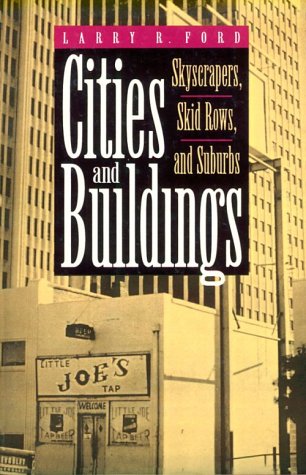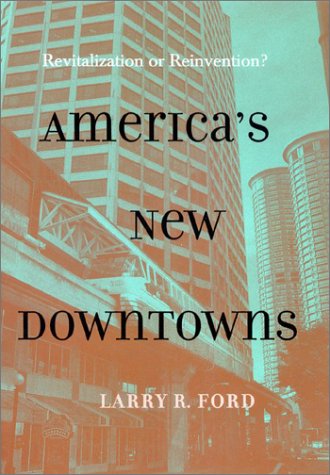Creating the North American Landscape
2 total works
In this work, Ford offers an account of the relationship between urban architecture - especially vernacular architecture - and the spatial arrangement and development of cities in North America. From office towers in the central business district to commercial strips in the "edge city", Ford shows how changes in the built environment parallel changes in urban economies and human culture. Focusing on ordinary structures rather than famous landmarks, the book provides a guide to understanding the changing character of any urban landscape. Ford describes how the idea - as well as the appearance - of the modern city has changed with the evolution of buildings such as skyscrapers, skid-row hotels, single family bungalows and ranches, large apartment buildings, public-housing towers, motels, mini-malls and festival market-places. Through illustrated case studies of specific building types in particular places, Ford explores the conflicting forces of decline, revitalization and preservation that constantly transform the urban scene.
What makes a good downtown, and why? Are today's downtowns, with their waterfront parks, festival markets, sports arenas, and cultural centers, more vibrant and lively than the "central business districts" of the nineteenth and early twentieth centuries? Was there ever a "golden age" of downtowns? In this book, noted urban scholar Larry Ford casts a critical and practiced eye on sixteen contemporary urban centers to offer an expert's view of the best-and worst-of downtown America. Ford begins with a brief history of U.S. urban development. He then explains his criteria for evaluating downtowns before proceeding with an on-the-street examination of the featured sixteen cities. Each is rated based on use of physical site, particularly for housing (unlike suburbs, Ford notes, most downtowns are located in challenging physical locales, such as harbors, rivers, hills, or peninsulas), street morphology, civic space, functional aspects (office space, retail stores, and convention centers), and the support districts in the fringe areas surrounding the downtown core.
Ford concludes with a suggested model of downtown structure based upon the case studies and with a look at the possible effects of increasing globalization on the downtowns of the late twenty-first century. This book will appeal to those interested in urban studies, landscape studies, American studies, architecture, historic preservation and planning, and urban geography. Featured cities: Atlanta, Baltimore, Charlotte, Cleveland, Columbus, Denver, Indianapolis, Minneapolis, Phoenix, Pittsburgh, Portland, Providence, San Antonio, San Diego, Seattle, and St. Louis
Ford concludes with a suggested model of downtown structure based upon the case studies and with a look at the possible effects of increasing globalization on the downtowns of the late twenty-first century. This book will appeal to those interested in urban studies, landscape studies, American studies, architecture, historic preservation and planning, and urban geography. Featured cities: Atlanta, Baltimore, Charlotte, Cleveland, Columbus, Denver, Indianapolis, Minneapolis, Phoenix, Pittsburgh, Portland, Providence, San Antonio, San Diego, Seattle, and St. Louis

